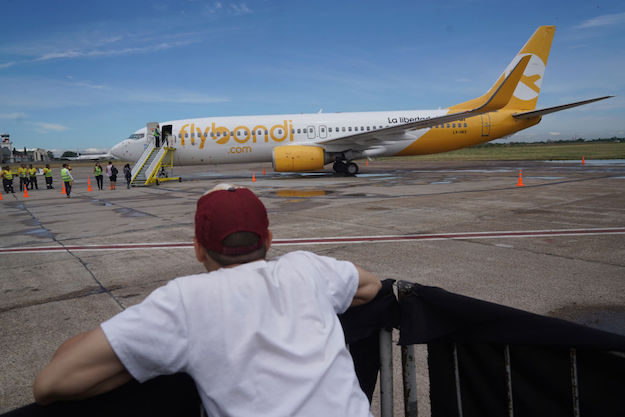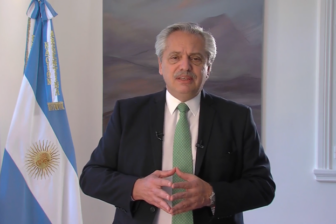BUENOS AIRES – On December 12th, the government of Argentina decided to stop commercial flights at El Palomar airport, an airfield in the center of the Buenos Aires metropolitan area. A long-running large military facility, it had been transformed during the Mauricio Macri administration into a vibrant hub for a number of low-cost airlines with the hope they would stir life into the stagnant airline business. Change was needed: As a result of the duopoly of Aerolíneas Argentinas (a state-owned carrier) and LATAM (a well-known South American airline), Argentines were flying less than half as much as their fellow South Americans, and similarly sized cities in Chile were landing seven times more flights a day.
In a short span of two years, both due to the more affordable prices and affordable access (it was the only airport in Argentina reachable by train), the hub lived up to its expectations. More than 2 million passengers took off from its strip. Growth was exponential, averaging close to 200,000 per month just prior to the closure. Largely as a result, the number of passengers traveling by air in the country increased 60%, and the price of flying fell by half. In fact, for the first time in 19 years, the number of domestic passengers outnumbered international ones, in spite of the latter also growing 23%.
The results echoed those obtained in Brazil after President Luiz Inácio Lula da Silva implemented similar policies there in the 2000s. Little wonder: If you let the market develop, in geographically large and not densely populated countries, air travel is safer and cheaper than spending a whole day in a bus or a car.
Argentina’s main tourist attractions lie far away from Buenos Aires and suffered from acute seasonality. Low-cost airlines flattened this seasonality, allowing for a more efficient use of infrastructure throughout the year. Foreign tourists also poured in, doubling in the four years up to 2019. The best example, perhaps, was the city of Bariloche, Argentina’s largest ski resort, that became directly connected to Brazil, and which ended up receiving close to a quarter million passengers in July of 2019, a number previously unheard of for a local airport.
Argentines got closer, not only with each other but also with the world. Triggered by the aggressive penetration of low-cost airlines, by 2019 four airports had established new international connections. A saying goes in Argentina that “God is everywhere – but if you want an appointment, it will be in Buenos Aires.” With the change of the airline industry, cheaper access and new hubs, it seemed for the first time Argentina was willing to challenge itself.
The state-owned carrier Aerolíneas Argentinas (AR) was obviously affected. But paradoxically – or maybe not – it improved its operational and financial performance. In 2011 the public purse was paying $136 in subsidies for each passenger flying, a number that had fallen to $31 by 2019, even after increasing by 20% the number of routes it flew. There was room for growth and competition, as the dormant demand of Argentina’s vast territory was thirsty for a larger and more varied supply.
However, the new government that came into office in December 2019 signaled from day one its hostility to the industry. Or, at least to everyone in the industry except for state-owned Aerolíneas. It stated right away that it did not see the benefit of low-cost airlines even though, by then, they transported almost 20% of all passengers. It found the fact that some of these airlines sold tickets at $1 to be preposterous and dangerous.
Then COVID-19 came and the industry was shut down – and largely remains so today. Since then, LATAM Airlines, already exhausted from its continuous struggles with the previous government of Cristina Kirchner, decided the future was too uncertain, so it packed up and left. Norwegian went into restructuring on its own merit. And the remaining low-cost airlines went into retreat. With the closing of El Palomar airport they were forced to move to faraway Ezeiza, Argentina’s main airport, where operation costs and access costs for the public are higher, weakening their competitive edge.
It is difficult to make sense of a policy that overturns one that increased competition, reduced prices and increased output. So why did the current government oppose this policy? A simple explanation that is heard these days in Buenos Aires is that the government is just undoing all the policies of the previous administration, irrespective of their results, akin to the populist tradition of pinpointing enemies (or creating them, or even imagining them if necessary). Though plausible, we believe this sort of reasoning is too simplistic. There are deeper reasons for the U-turn.
While Argentina may look chaotic on the surface, its politics remain stubbornly fixated on the view that the economy is a power play of interests that the state has to administer, control and, above all, protect. The end result is that change becomes difficult if not impossible. Union interests, domestic industrialist interests and public servants’ interests are some of the primary stakeholders of this tutelage. Call it as you wish, we like to think of this as a blend of conservativism and populism. Of course, as rents are flushed out to these groups, someone must pay. In Argentina it has typically been the less organized middle class, farmers and the smaller formal firms and entrepreneurs, all of them suspicious of the promised land in which they are just called in to foot the bill.
The current government is a good example of this populist conservative approach. In this year, it has bloated the deficit, increasing transfers and public employment. With lack of financing it has increased taxes and relied on money printing. Not surprisingly, inflation expectations at 52% anticipate a hefty tax on the middle class and the disenfranchised poor. But there is more. By reimposing exchange rate controls it has taxed exporters, to the benefit of those to whom it provides access to the official exchange rate. And where possible it has prepared the grounds for expansion. It has just re-nationalized all road concessions, and the nationalization of a large cereal exporter did not go through only because Argentines took to the streets.
With these resources it has fed its main constituencies. The state-owned airline workers are just one example. Wiping out competition to the state-owned carrier makes it easier to justify the close to $1 billon of subsidies it will receive in 2020. It is in this sense that the closing of the Palomar airport is so symbolic. It is the triumph of conservatism over reform. It is the triumph of concentrated interests over those of the general public. It is, once again, the triumph of status quo over change.
Argentina does not need more conservatism. The defense of the status quo has produced one of the poorest growth performances in the world over the last 40 years. Argentina needs to free the chains of competition, change and innovation. It needs to slash those ingrained rents, not nurture them. Fighting for the public good and confronting those privileged few is the agenda that Argentina needs. But it is not an easy fight. It was attempted by the previous government, meeting fierce resistance. The airline industry reform was perhaps the boldest and most ambitious of those attempts.
It will take more than the closing of an airport to stir change, but the long days ahead in buses and cars will, at least, provide some time to think about it.
—
Dietrich was the transportation minister of Argentina from 2015 to 2019. Sturzenegger is a professor at the Universidad de San Andrés and was governor of the Central Bank of Argentina from 2015 to 2018.








